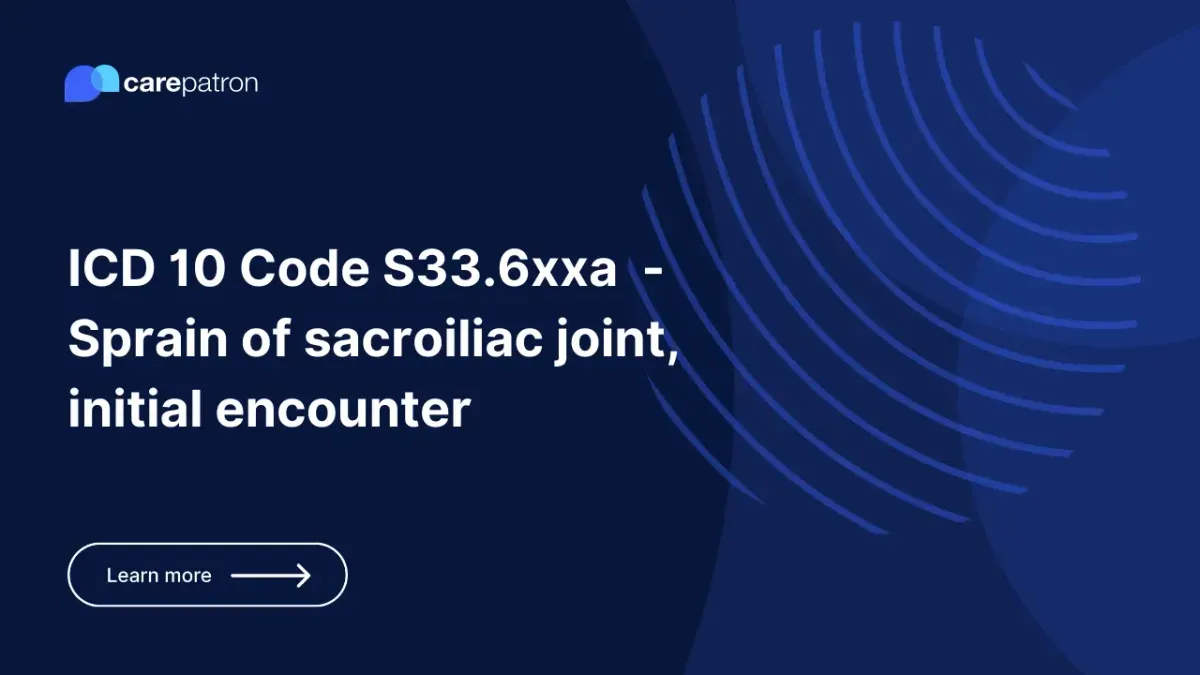
S33.6xxa – Sprain of sacroiliac joint, initial encounter
Learn about ICD-10-CM code S33.6XXA for sacroiliac joint sprain, initial encounter, including billability, clinical info, related codes, and FAQS.
Use Code
Commonly asked questions
Yes, this ICD-10 code is billable.
When assessing a patient with sacroiliac joint sprain for the first time. They also have to be undergoing active treatment for it.
Compression (through bandages, cold/ice compresses, etc), medicine (non-steroidal anti-inflammatory), exercise, physical therapy, and steroid injections.
EHR and practice management software
Get started for free
*No credit card required
Free
$0/usd
Unlimited clients
Telehealth
1GB of storage
Client portal text
Automated billing and online payments
